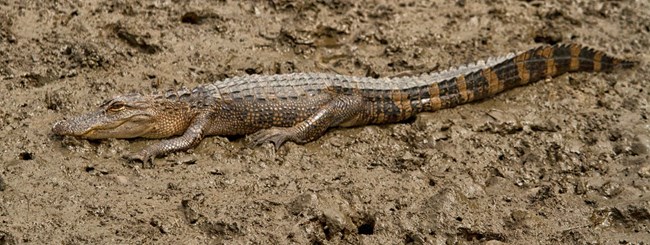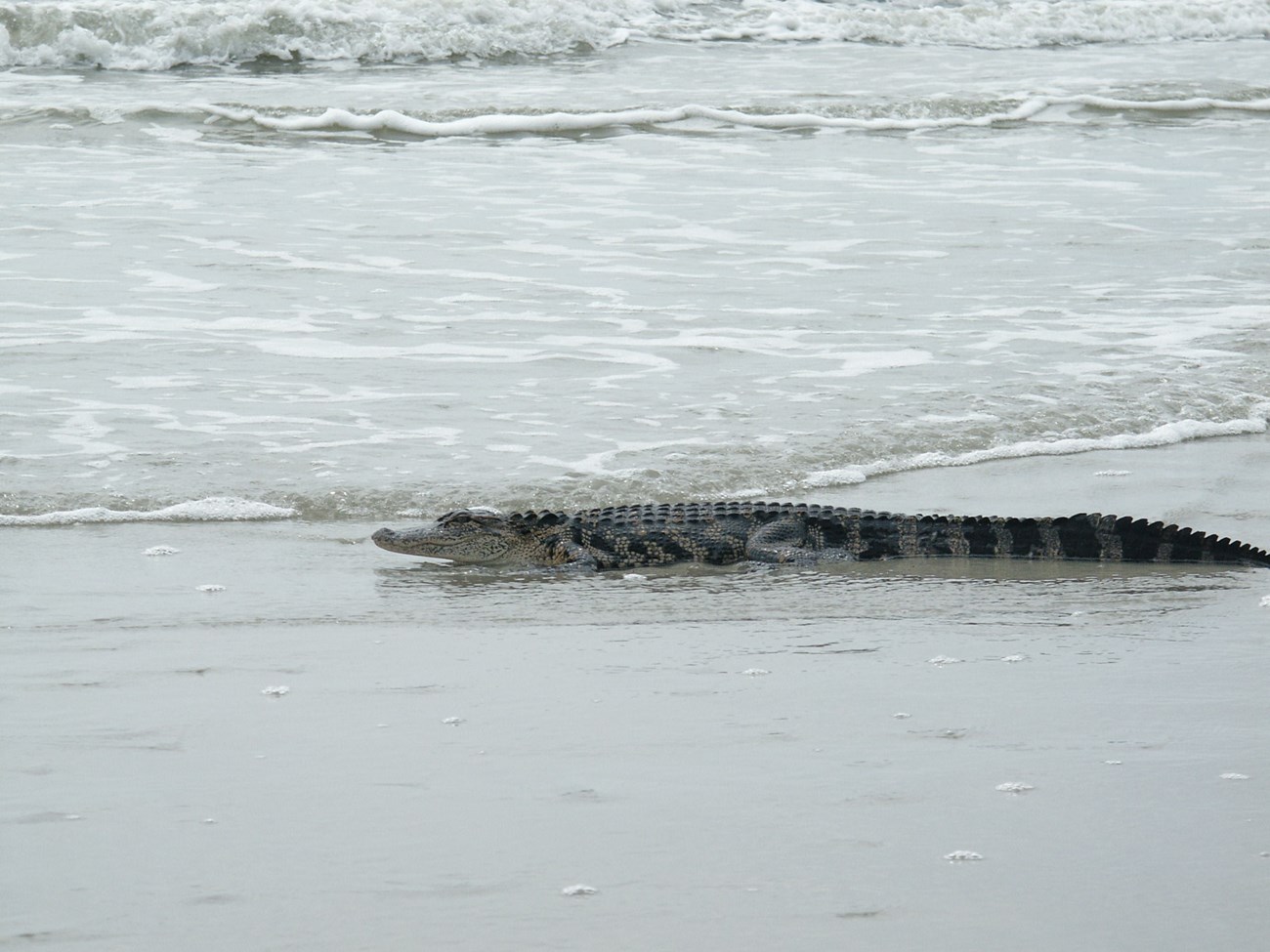The Misunderstood Alligator mississippiensisWhat do you picture when you think of an alligator? Sharp teeth? Alligator attacks? An alligator high walking across a golf course? These are the ways that alligators are depicted in the media. However, there is much more to an alligator than sharp, crushing teeth (though they can bite down with thousands of pounds of pressure!). Alligator attacks are rare, and are often the result of human interactions with alligators. When alligators are fed by humans, they become conditioned to associate us with food, increasing the likelihood of an attack. If we can get past the rare horror stories of alligator attacks, we can start to appreciate them for the truly fascinating creatures that they are.
NPS Photo
Cold-blooded Creatures Alligators are reptiles, so they are ectothermic, or cold-blooded. Their body temperatures are regulated by outside forces. It is because of this that alligators do not eat as frequently as one may expect. Alligators have to be able to heat up in order to digest their food, so unless temperatures are above 70 degrees Fahrenheit, they will stop feeding. When temperatures drop below 55 degrees Fahrenheit, alligators will become dormant. However, alligators don’t hibernate; they go through something called brumation. Brumation isn’t quite the same as hibernation, and the main difference lies in the level of activity. True hibernators won’t wake up at all during their period of deep sleep. During brumation, alligators become dormant and lie in dens, though they will still drink water and come out on hot days to bask in the sun. On Cumberland Island, alligators likely exhibit some level of brumation, but it is common to see large alligators basking in the sun to heat up in the winter time. 
NPS Photo Temperature not only determines how active alligators are or how often they feed, it also determines the sex of alligator hatchlings. Alligators are egg-layers, and the temperature that the nest is incubated at determines whether female or male alligators will be born. The temperature of each nest can vary depending on the materials that the mother alligator used to build the nest and where she placed the nest i.e. in a shaded area or in an open, sunny area. Nests that are incubated at 30 degrees Celsius and below yield female alligator hatchlings. Nests that are incubated at 34 degrees Celsius and above will yield male alligator hatchlings, and temperatures between 30-34 degrees Celsius will yield a mix of the two. Once young alligators hatch, they will make vocalizations that attract their mothers who then uncover the nest. Mothers will then carefully bring them to the water in their mouths, then shake their snouts back and forth to encourage them to swim out. Alligators are one of the only reptiles that care for their young after birth. Hatchlings will stay with their mothers for protection for at least a year, but can stay for up to three years.
Predators and Diet Alligators are top predators, but this doesn’t mean that they don’t face predation too. Alligators are especially vulnerable when they are young. Alligator eggs can be eaten by raccoons, snakes, and hogs, among others. Young alligators are hunted by wading birds and raccoons, though larger alligators are most likely their primary predators. Young alligators will feed primarily on insects, small invertebrates, and fish, but as they get older, they will move on to things like snakes, mammals, birds, bigger fish, and other alligators. 
NPS Photo In areas that experience seasonal dry periods, alligators are credited as “wetland engineers” for wallowing in mud, pushing vegetation aside, and creating deeper depressions that hold water necessary for survival throughout dry periods. These “alligator holes” attract all kinds of wildlife that serve as a source of food for the alligator, but also provide other wildlife with a source of fresh water when they otherwise may not find one as readily available. Alligators prefer freshwater, but can tolerate brackish water, and as such have been seen in the salt marsh and rarely in the surf of Atlantic. Keep your eyes peeled for these fascinating crocodilians, especially when exploring swampy areas of the island. Be sure to observe them from a distance, and never feed any wildlife. |
Last updated: December 11, 2019
